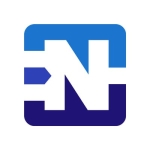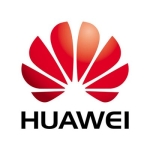What is our primary use case?
Azure Firewall is a cloud-native solution. It's only for netting and simple source-destination blocking. The client wanted everything, so they wanted us to implement a third-party solution. Palo Alto was the leading solution. It's easy to install.
Palo Alto is dynamic regarding protocol rules, and it is classless. The client also wanted a third-party solution between their on-premise environment and Azure, so they went for Palo Alto. Palo Alto VM-Series is deployed on the Azure Cloud.
How has it helped my organization?
We previously had a hardware solution. With VM-Series, you don't need to purchase the hardware. You can deploy it in the cloud, or they have a PaaS, SaaS, and IaaS version. You connect your network to their cloud and get the traffic filtered.
What is most valuable?
The most valuable feature is the proxy write. It's called the Write Fill process. It's in a bundle of everything. Palo Alto has everything, including CAD management, malware protection, and a file management system. There is a bundle of packages. This is not in the latest edition of Azure Firewall.
The VM-Series reports how much bandwidth a particular IP is using. You don't need to regularly log into a website, like a Cisco command, to see what kind of ACL it's getting. There isn't an ACL use portal event. You can go there and see how much my ACL has been getting me.
It automatically tells what rules are in place, like scheduled and additional rules. You don't need to create new rules every time. It will automatically tell you that this rule exists.
Palo Alto's next-generation firewall is classless, and it's a bundle of everything, including malware management, bandwidth utilization, and how much each IP is costing you. It offers bandwidth utilization, DDoS protection, a next-generation firewall, and everything I need in one bundle.
You can integrate fully automated virtual firewall deployments and provisioning into existing DevOps workflows if you are a good developer. Palo Alto offers help for it, but you should have developer knowledge.
It's easy to migrate workloads to the cloud. They expose the API also. In two days, I can implement two firewalls in different regions. It's flexible. That is a feature of Azure and Palo Alto. This kind of integration is why I am able to do the migration in two days.
What needs improvement?
There's room for improvement in terms of integration with the load balancer. It isn't like Fortinet, which has a load balancer built into its firewall. It is effortless to integrate within the load balancer-plus-firewall solution.
Palo Alto doesn't have much ability to load balance, so you must purchase a third-party load balancer. It would be great if they did these kinds of changes to integrate the solution with the load balancer.
For how long have I used the solution?
I have used Palo Alto VM-Series for one year.
What do I think about the stability of the solution?
VM-Series is highly stable. One of our clients has been using it for one year, and we've been using it for a year and a half. There were some bugs initially, but in the past two years, it has gotten more stable.
What do I think about the scalability of the solution?
I give VM-Series six out of 10 for the scalability. It's one area where they need to improve. Scaling up requires a lot of effort because it's cloud infrastructure. You need to change a lot of settings and ask them to customize before it starts working.
There are still some issues after a customer has customized the solution. Scalability is something they are working on. I am hoping that we'll see some decent scalability within a year and a half.
How are customer service and support?
I rate Palo Alto support nine out of 10. Palo Alto technical support is excellent. When you raise a ticket, you get a support call in 10 minutes. They will contact you by phone and follow up on WhatsApp to see if the issue hasn't been resolved.
How would you rate customer service and support?
How was the initial setup?
Setting up VM-Series is completely straightforward. You have to download the VM, and there is a free interface for internal and external management. You configure the interface and the root table within Azure, then the device is good to go. Lastly, you need to activate your license, and Palo Alto is integrated into Azure.
We had to purchase the license from the vendor and download the VMs from the Cloud market. You can download VM-Series from the Azure marketplace, it is a simple process. You configure everything in the management interface. Once that's done, you configure the access list so that others cannot access it from anywhere.
After you purchase the license, you have to put the license in Azure VM. There's a similar license you have to implement in the Palo Alto portal. Your Palo Alto is ready to use once that goes through. It took us one week to deploy. An issue came up, and we had to raise a ticket, so it took seven days to complete the implementation within Azure Cloud. One person is enough to deploy it. I deployed two firewalls within seven days, so I didn't need anyone's help. One or two people are enough to manage it.
What's my experience with pricing, setup cost, and licensing?
The price is fair enough. The most expensive is Cisco, followed by Fortinet, then Palo Alto. Palo Alto is very much within the range. We use Software Next-Generation Firewall Credits for licensing and consuming VM-Series. They have a cloud solution using their portal. You can go in and put it through the license.
We can't use the credits on the fly. It is not possible because they acquire new CPU RAMs. We cannot change this on the fly. It will take one day of downtime. It is not easy. This is planned downtime. You have to plan for it outside of business hours. If you do the downtime during the business day, you can't do anything.
The Software Next-Generation Firewall Credits enable us to protect ourselves without going through a long procurement cycle. The licensing part plus implementation is very easy. You just create the firewall, and it can do everything.
What other advice do I have?
I rate Palo Alto Networks VM-Series eight out of 10. Palo Alto is easy to use, and the price is fair compared to the other solutions on the market. I recommend Palo Alto, but you should also consider the other solutions out there. Some solutions have lots of bugs like FirePOWER. Also, the price for FirePOWER is quite high. That is not the case with Palo Alto. It has fewer bugs, requires minimum effort, and the price is fair. Everything is accessible within the same portal.
Which deployment model are you using for this solution?
Public Cloud
If public cloud, private cloud, or hybrid cloud, which cloud provider do you use?
Microsoft Azure
Disclosure: My company has a business relationship with this vendor other than being a customer: MSP


















